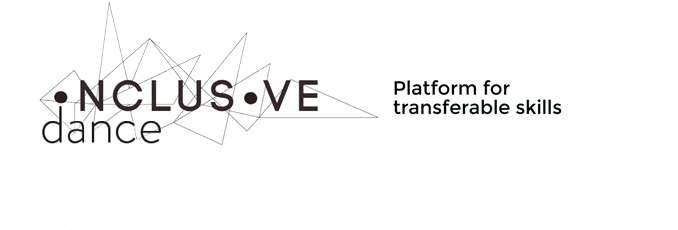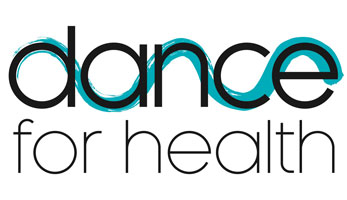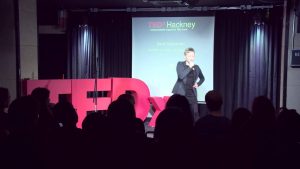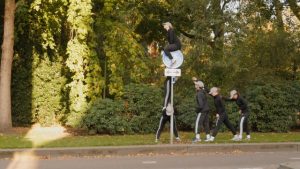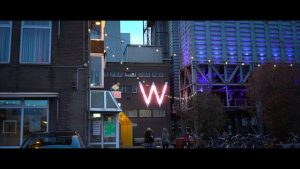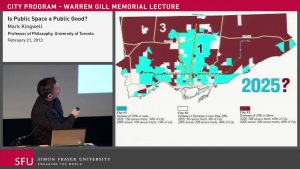by Katerina Dietzova
 Louise Rutten
Louise Rutten
teacher at Dance for Health – den Bosch, Tilburg
1. Which kind of studies did you do? Are you still active in the field of your studies and how?
In 1978 I finished my study for dance teacher with Classic Ballet, Jazz Dance and Caractère at Brabants Conservatorium in Tilburg. In 1984 I finished a part-time school Expression of Dance at the Theaterschool Amsterdam.
Since then I‘ve been teaching a wide variety of groups of all ages, in very different settings.
2. How did you get to the dance for Parkinson’s classes?
I had my weekly training class at Station Zuid, Tilburg, at the time Marc was diagnosed Parkinson’s disease. Andrew asked me to join the classes and after a while I covered his classes when he was abroad.
3. Where lays the sense/aim of dance for people with Parkinson for you?
Bringing and keeping your body in shape and enjoying the moves you make. Express yourself with body language and develop your dance vocabulary. Have fun with the other dancers.
4. Do you consider it your profession or is it only a supplement to your profession of a dancer?
I am a professional dance teacher and try to earn a living that way.
5. How did you imagine your dance carrier before entering a dance school? What was so attractive on being a dancer?
I have always danced when there was music, especially when I felt really happy or sad. So I had my best dance moments in clubs or during live concerts and this haven’t stopped yet. Dance is my medium.
Back then I had no idea about what kind of teacher I would be.
6. How did this image of future carrier evolved during your school years? Where did your education lead you?
When I finished my first school, most groups I had were for jazz dance but we used pop music and never improvised which was strange because in jazz music it’s essential. That’s why I went to the second school so I could develop thematic classes. And I still try to let technique be equally important as improvisation.
6. Has anything shifted again thanks to classes for Parkinson’s? Which kind of skills could you „re-use“ from your previous activities?
Through working with people with Parkinson’s disease I decided to focus more on elderly people and got my diploma MBVO (Meer Bewegen Voor Ouderen = More Movement for Elderly). This is movement related to sports and games. And of course, little pieces of earlier ideas, dance combinations or themes regularly pop up in my present classes.
7. Is the content of your classes for Parkinson’s or the way of leading it nurtured by your active profession as a dancer?
It’s nurtured by my experience as a teacher. So I regularly talk with the dancers about their needs in a class, their wishes and taste in music.
8. Could you share the most valuable moment of experience from this class?
The most valuable moments lie in the end of the class when the dancers don’t need me anymore and there is just music and dance.
—
 Megan de Vries
Megan de Vries
Dance for Health teacher in Rotterdam (NL)
1. Which kind of studies did you do? Are you still active in the field of your studies and how?
I did Fafa show/musical academie (nowadays called Fafa international show dancers), beside that I did KNGU (Koninklijke Nederlandse Gymnastiek Unie) dance teacher.
I now have a ballet school where I mostly teach children from 4-24 years old. Beside that I do Dance for Health.
2. How did you get to the dance for Parkinson’s classes?
I saw Marc Vlemmix (the founder of organization Dance for Health) at television RTL late night and had the feeling I had to do something with it https://youtu.be/VUfhQuelSIs
3. Where lays the sense/aim of dance for people with Parkinson for you?
Someone I knew had Parkinson’s disease and wasn’t able to do anything because he gave up… he didn’t know. I really like working with people who won’t give up and give them tools to work with. I think there is almost always a way to move. I’m working towards the experience to let people explore their freedom within their own boundaries which mostly disappear when they explore.
4. Do you consider it your profession or is it only a supplement to your profession of a dancer?
The way you teach the people at Dance for Health is a way you can use at all your classes. But teaching the dancers with Parkinson’s and reuma is a supplement.
5. How did you imagine your dance carrier before entering a dance school? What was so attractive on being a dancer?
I wanted to travel around the world to dance… but then I had some injuries. I started to think about teaching, teaching dancers with injuries, and generally helping people through dance… and here we are…
6. Has anything shifted again thanks to classes for Parkinson’s? Which kind of skills could you „re-use“ from your previous activities?
Since I teach Dance for Health classes I have a problem teaching school kids who has to do dance at school but don’t really want to move at all. They can move but they don’t want to… In the Parkinson’s classes it is the other way around sometimes. That’s hard to understand sometime.
7. Is the content of your classes for Parkinson’s or the way of leading it nurtured by your active profession as a dancer?
Yes…
8. Could you share the most valuable moment of experience from this class?
Don’t take movement for granted and everyone has a (tiny) dancer in him/her.
—
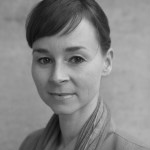 Annemarie Labinjo
Annemarie Labinjo
teacher Dance for Health Rotterdam, Utrecht (NL)
1. Which kind of studies did you do? Are you still active in the field of your studies and how?
Hogeschool voor de Kunsten/uitvoerend dans, NLP, Master Coach of Strategic Intervention System, Gyrotonic and Gyrokinesis, Analytical Profiler.
I am still active in these fields. I work as a coach/trainer. My focus is on personal development, talent development, stress management and bodywork.
2. How did you get to the dance for Parkinson’s classes?
Scapino Ballet Rotterdam introduced me to it and approached me as a teacher. I participated in the class and I loved it! A couple of months later I followed the teachers training.
3. Where lays the sense/aim of dance for people with Parkinson for you?
To become aware of the possibilities of their body. Also stimulating posture, coordination, strength, flexibility and balance are a great link with ballet dancers who practice this almost every day. On top of that visualization is a great tool, to use in different and new ways to reframe their problem.
4. Do you consider it your profession or is it only a supplement to your profession of a dancer?
Yes, I consider it as my profession. It is an element of other things I am doing within my profession as a coach/trainer.
5. How did you imagine your dance carrier before entering a dance school? What was so attractive on being a dancer?
Before I was entering a dancing school I knew I just wanted to dance, and had no idea about the real dance world, auditions and jobs in dance. I loved expressing myself in dance in a variety of ways. It gave me energy, I could be vulnerable, balanced; beauty and also daring to be ugly were for me all there.
6. How did this image of future carrier evolved during your school years? Where did your education lead you?
I was so dedicated and determined that I could finish my education within 3 years instead of 4 years. In my third year I already got offered a job as a professional dancer at Introdans (NL). After 2 years dancing there I went to Scapino Ballet (NL). This was my dream. I stayed for 15 years and I still am connected to the company as an educational trainer, giving introductions to the public and now and then as a ballet master.
7. Has anything shifted again thanks to classes for Parkinson’s? Which kind of skills could you „re-use“ from your previous activities?
The skills I can re-use are imagination, stage experience, being comfortable in my own skin, understanding how the body works in space, time and motion, reframing a problem, working with the connection of the body and the mind.
8. Is the content of your classes for Parkinson’s or the way of leading it nurtured by your active profession as a dancer?
Sometimes I use repertoire from Scapino Ballet as an inspiration for a theme for the class. I also use classical structure, modern movement and improvisation as tools.
9. Could you share the most valuable moment of experience from this class?
Seeing that the dancers gain control and/or self-assurance over themselves. And that they become aware of how to use this in their daily lives. An example from a dancer, who had problems walking in between big crowds, could reframe her problem into focusing on finding openings in the space around her and not focusing on the many people around her and getting anxious about it. She went to a concert with her husband were it was very crowded, in the moment she used finding the openings and it worked for her. Her husband was flabbergasted in how she did this so quickly (he had problems getting through!), and she responded: „Just find the openings!“
This is a tool coming from martial arts.
—

Dido Mirck
teacher at Dance for Health Amsterdam (NL)
1. Which kind of studies did you do?I did preparatory education Theater Dans (13-18 year old) at the Theater School of Amsterdam. Later I did propedeuse (= first year) at Modern Theater Dance department and another propedeuse at Jazz Theater Dans both at the Theater School of Amsterdam.
2. Are you still active in the field of your studies and how?
Yes, I danced for about 8 years at Danstheater VOS, where we made dance performances for elderly people in elderly houses. I have done some street theater performances, made and performed by myself. And I performed and was teaching for an art production ZIS Theater. Besides I taught some workshops to elderly people in elderly houses and in a psychiatric hospital. Last year I started teaching people with Parkinson’s disease and multiple sclerosis (MS).
3. How did you get to the dance for Parkinson’s classes?
Because my mother has Parkinson’s disease and I used to work with dancer Soosan Gilson a lot, who happens to be the wife of Martin Gilling, one of the most active dancers at Dance for Health.
4. Where lays the sense/aim of dance for people with Parkinson for you?
I love to make people move, at both the inside and the outside. I love to see how people change in one hour a bit. From closed to opened, from low energy to high energy and from alone to together.
5. Do you consider it your profession or is it only a supplement to your profession of a dancer?
I consider it as one of my professions. Besides teaching and dancing, every now and then I am also a performer/interpreter in different types of projects.
6. How did you imagine your dance carrier before entering a dance school? What was so attractive on being a dancer?
I always imagined being a dancer and never imagined being a teacher. This is a pity I guess, because I never chose for the teacher’s department. I discover now, mainly through Dance for Health that I do love to teach. However, I think at the age of 13-20 I only wanted to dance myself. I wasn’t interested in teaching at all.
At the beginning I think I didn’t have such a clear picture of what contemporary dance could be. Before starting at the preparatory education at Theater Dance department, I had only danced at ballet classes since I was six. When I was twelve, it became clear to me that I wasn’t flexible enough to become a ballerina. That is why I switched to Theater Dance, where we were taught classical, modern, improvisation, jazz and folklore dance. The older I got, the more I saw of contemporary dance. I was moved a lot by choreographers such as Christina de Chatel, Hans Tuerlings or Conny Jansen. Later on, when I was around twenty, it turned out that I wasn’t flexible enough for modern dance either, so I quit the Theaterschool after all. Later (after I studied to become an interpreter), I discovered there are several ways to dance even as a professional, even without that flexibility in my body what had been lacking…….
5. How did this image of future carrier evolved during your school years? Where did your education lead you?
As written above, my ideas of dance and my possibilities to dance changed over the years. Even though, I wasn’t trained to teach, I do think a lot of my teaching skills I did take over from having so much and thorough dance classes from before I was twenty.
6. Has anything shifted again thanks to classes for Parkinson’s? Which kind of skills could you „re-use“ from your previous activities?
Yes! A lot! Through Dance for Health I discovered I was „gifted“ not only to dance, but to teach as well. I took with me: experience from making contact with my audience, mainly elderly people from the elderly houses; that is something I use in my classes now a lot. Further: making physical contact, eye contact, using humor. And musicality.
7. Is the content of your classes for Parkinson’s or the way of leading it nurtured by your active profession as a dancer?
No, unfortunately, at the moment I don’t dance myself. At this moment I miss it.
8. Could you share the most valuable moment of experience from this class?
I can’t recall one moment in particular. I just always love the way my dancers start to waken up in their faces, because of the joy the dance gives them.
—
 Anke Ottema
Anke Ottema
teacher Dance for Health Rotterdam, Utrecht (NL)
1. Which kind of studies did you do? Are you still active in the field of your studies and how?
I studied first at Royal ballet school in den Haag, at age of 12 and later department of dance performer at Codarts in Rotterdam (NL). I’m active as a dance teacher and sometimes as a performer.
2. How did you get to the dance for Parkinson’s classes?
A friend of mine, a dancer who has been teaching classes for Parkinson’s as well, has informed me about it. She thought it would be something for me. As I got some more information it appealed to me that I should give it a try.
3. Where lays the sense/aim of dance for people with Parkinson for you?
The dance classes can offer a safe place where people can experience and experiment with their physical and mental state of being, expressing themselves with and sharing movements, with the aim of starting a process of getting to a higher state of well being.
4. Do you consider it your profession or is it only a supplement to your profession of a dancer?
I do consider it my profession to teach dance to people with Parkinson’s.
5. How did you imagine your dance carrier before entering a dance school? What was so attractive on being a dancer?
I wanted to become a professional dancer in a company. At some point I saw myself a lot in NDT.
The physical challenge, the love to move to music and express myself with dance and sharing this with the world made becoming a dancer attractive to me.
6. How did this image of future carrier evolved during your school years? Where did your education lead you?
My education lead me to my goal, I became a professional dancer in several dance companies. I really enjoyed working in Basel for the dance company; that was my “dream come true”. But in the end I wasn’t offered a steady contract there, which felt important to me at that time, to feel stable. I decided to take the money I earned and travel for a little while. I went to New Zealand, because of my family roots. I felt so good there that I decide not to come back for my other dance job in Germany. There I discovered taichi; all the keys I was looking for in dance, I discovered in taichi. After I came back to Europe I continued with the taichi. There I think happened the switch towards the self-search in movement.
7. Has anything shifted again thanks to classes for Parkinson’s? Which kind of skills could you „re-use“ from your previous activities?
The consciousness of my love for and joy in dance and the social side of dance became stronger again thanks to the classes for Parkinson’s. Skills that I re-use is the technique as a base of smart en healthy movements with endurance, taking a good care of your body, the searching for new movements, the clearness and expression of movements, improvising with movements.
8. Is the content of your classes for Parkinson’s or the way of leading it nurtured by your active profession as a dancer?
Both content and the way of leading my classes.
9. Could you share the most valuable moment of experience from this class?
I remember when one of the dancers was having a problem to move forward. We were rediscovering a ‘new’ way together how to get to move easier, and it worked
—
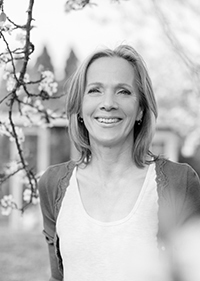 Wilma Vreeling
Wilma Vreeling
teacher Dance for Health, Enschede (NL)
1. Which kind of studies did you do? Are you still active in the field of your studies and how?
I studied ballet at the Scapino Ballet School in Amsterdam (NL). Also I did my Master of business Administration at the TSM Business School in Enschede (NL).
2. How did you get to the dance for Parkinson’s classes?
A Yoga friend of mine had seen Mark and Andrew and she suggested I should also give dance classes for people with Parkinson’s, multiple sclerosis (MS) of rheum.
3. Where lays the sense/aim of dance for people with Parkinson for you?
The most important thing is to get people moving according to their ability and that they feel it makes moving during after few days easier. Also bringing the fun and humor back to the daily life is an issue that is important.
4. Do you consider it your profession or is it only a supplement to your profession of a dancer?
I consider it as my profession because my profession is getting people to move.
5. How did you imagine your dance carrier before entering a dance school? What was so attractive on being a dancer?
The image I had was just moving my body and show people what movement can mean for your physical and mind body.
6. How did this image of future carrier evolved during your school years? Where did your education lead you?
It was hard work and still it felt ok. My education led me also to make other people move and make them feel good doing so.
7. Has anything shifted again thanks to classes for Parkinson’s? Which kind of skills could you „re-use“ from your previous activities?
Yes, I already knew what movement can do for people and the classes for Parkinson’s and MS made me aware of how specific needs each body sometimes have. From another perspective I see the bodies and how their limitations can grow out in possibilities.
8. Is the content of your classes for Parkinson’s or the way of leading it nurtured by your active profession as a dancer?
Sure the nurture is coming from knowing your body and what it can do and bring.
And also the creative part comes from there where you’ve been and had experienced as a dancer.
9. Could you share the most valuable moment of experience from this class?
Yes, for me that’s the moment when emotions are shown by the dancers.
